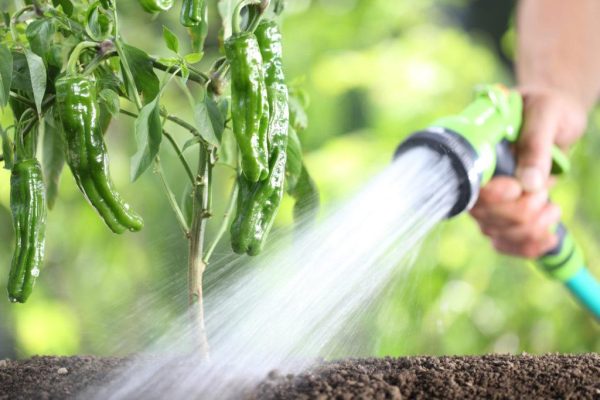Here you are, planning to grow your first batch of weed. You know the strain, you know the number of plants, you know your setup. But what is this about autoflowers seeds? What are they and how do they differ from other seeds? And, of course, are they worth it? We’re happy to join you on your learning journey, dear reader. Continue on for the compelling answers to your questions: what are autoflowering seeds!
 Autoflowering cannabis, Wikipedia
Autoflowering cannabis, Wikipedia
Straight to the Point: What are Autoflowering Seeds?
Autoflowering cannabis is a small hybrid type of cannabis that begins flowering without being dependent upon changes in the light cycle. They have a faster growth cycle than photoperiod cannabis, they are smaller, they generally require less maintenance, and they can produce a decent yield.
Autoflowers are a great place to start for beginners because they require a lot less maintenance than photoperiod cannabis. You can grow an autoflower from a seedling to a flowering plant on an 18/6 day/night cycle (or even 24/0!), they grow quicker (as fast as 8 weeks), they’re compact so you can fit them in small spaces, and they require less nutrients (because they’re smaller).
The Details! What are autoflowering seeds?
What is the History of Autoflower Seeds?
We know all plants require sunlight, but the amount of sunlight varies between plants and even strains of plants. Photoperiod cannabis reacts to changes in the natural environment, specifically the amount of daylight available during the growing season—as summer wanes and the days grow shorter, cannabis plants begin to flower.
Cannabis likely originated somewhere in the Northeastern Tibetan plateau in present-day China, where winter daylight hours are as few as 10 hours a day and summer daylight hours are as much as 14 hours a day. When we grow indoors, we usually want to simulate these lighting conditions (or a little more) alongside the growth cycle of the plant. As the plant matures, we adjust the lighting (or photoperiod) to induce flowering.
 The Volga River, wikipedia
The Volga River, wikipedia
Autoflowering cannabis plants are a hybrid between a common cannabis strain (Indica or Sativa) and a third strain called “Cannabis ruderalis,” which probably originated around the Volga River in Russia. Of course, Russia’s daylight cycle is very different from the Tibetan Plateau so ruderalis is a strain adapted to the environment and does not rely on photoperiods to produce flowers, rather it relies on its own maturity. However, ruderalis also lost the aroma and THC content of other cannabis strains.
How Do They Differ from Photoperiod Seeds?
Because autoflowering cannabis is a ruderalis hybrid, it automatically switches from vegetative growth to flowering based on age rather than photoperiod. When autoflowering cannabis first hit the market in the 2000s, it was not popular—the THC levels were low, the plants were small, and the yields were tiny. However, over the past 20 years, breeders have seen the potential of these plants and have brought some great traits out, including pretty large yields, and a good THC-CBD ratio, while keeping the plants small.
Read more to find out what are autoflowering seeds!
What Are the Photoperiods of Autoflowers?
When growing autoflowers, you can keep a consistent photoperiod throughout their entire growth cycle. Whether this is 16 hours light, 8 hours dark, 18/6, or 24/0, autoflowers will produce flowers because their growth cycle is not dependent on light. However, like all other strains, you’ll still need to adjust the height of your lamp as the plants grow taller—although they’ll never grow too tall.
AutoFlowers’ Growing Guide
How Long Do You Need to Grow Autoflowers?
Autoflowers are usually much quicker than photoperiod plants, with a lifecycle of about 10 weeks. However, if you’re experienced and have found an especially fast strain, you can grow a plant from seed to fully flowered in 8 weeks.
 Autoflowering cannabis, Grace Genetics
Autoflowering cannabis, Grace Genetics
Do You Need to Do Anything Special for Autoflowers?
Autoflowers do differ from photoperiod cannabis in a few ways and there are a few things you will need to be aware of as you grow:
- Watering: Autoflowers require less water than photoperiod plants because they are smaller. They also require lighter soil so that excess water can drain quickly—adding clay balls or coco coir can help. If you’re using soil, you’ll want to use a PH meter to test your water/nutrient mix to have a pH of 6—7.
- Temperature and humidity: Autoflowers like room temperature (~70°F). RH is the same as other strains, but during flowering, it should be between 40—50%.
- Space: This depends on your growing technique, however on average an autoflowering plant needs about 2-4 gallons of room, depending on the strain and environment you’re in.
- Grow them alone: Autoflowers grow better when grown next to other autoflowers—you’ll get smaller yields and less reliable growth periods if you grow them next to photoperiod plants.
- Nutrients: Autoflowers need fewer nutrients than their larger cousins. Be sure to check out the nutrient requirements provided by your seed supplier, but in general, because autoflowers are so much smaller, they need about ½ to ¼ the number of nutrients that a normal-sized plant requires.
Benefits and Drawbacks of Autoflowering
Here’s a quick pro and con guide to autoflowers to help you make your decision about whether they are right for you!
| Pros | Cons |
| Fast life cycle | Lower yields |
| Tiny plants/small space requirements | Potential lower THC levels |
| No changes in photoperiods | Not easy to clone/clones are poor quality |
| Fewer nutrient requirements | If you make mistakes the plants don’t have time to recover |
| Generally resilient | A smaller variety of strains (but still a fair amount!) |
| Generally easy to grow and maintain |
What is autoflower?
An autoflower, short for autoflowering cannabis, is a type of cannabis plant that automatically transitions from the vegetative stage to the flowering stage based on age rather than changes in light cycles. It offers a convenient and efficient option for growers looking to cultivate cannabis with minimal hassle and maximum flexibility.
How are autoflowering plants created?
Autoflowering plants, revered for their rapid growth and automatic flowering regardless of light cycle, are a result of meticulous breeding and genetic manipulation. As a cultivation expert, I’ll delve into the process of creating autoflowering plants, supported by data and practical knowledge.
1. Origin and Genetics:
Autoflowering plants trace their origins to Cannabis ruderalis, a subspecies native to regions with short growing seasons and harsh climates. Ruderalis evolved unique traits, including autoflowering ability, as an adaptation to these environments.
Breeders selectively crossbred Cannabis ruderalis with potent photoperiodic strains, such as Cannabis indica and Cannabis sativa, to incorporate autoflowering traits into desirable genetic backgrounds.
2. Introduction of Ruderalis Genetics:
The key step in creating autoflowering varieties involves introducing genes responsible for autoflowering traits from Cannabis ruderalis into photoperiodic strains.
Breeders employ techniques such as backcrossing, hybridization, and genetic selection to stabilize autoflowering traits while retaining desired characteristics such as potency, flavor, and yield.
3. Hybridization and Selection:
Through controlled breeding programs, breeders meticulously cross autoflowering plants with high-quality photoperiodic strains to create hybrids with autoflowering capabilities and desirable attributes.
Selection criteria focus on traits such as potency, yield, flowering time, resistance to pests and diseases, and overall growth vigor to ensure the development of superior autoflowering varieties.
4. Stability and Consistency:
Achieving stable autoflowering genetics is a gradual process that requires multiple generations of breeding and selection to eliminate undesirable traits and ensure uniformity among offspring.
Breeders employ rigorous testing and evaluation protocols to assess the stability, consistency, and performance of autoflowering lines across different environments and growing conditions.
5. Advancements in Breeding Technology:
Advancements in breeding technology, such as marker-assisted selection and genetic sequencing, have accelerated the development of autoflowering varieties by enabling breeders to identify and manipulate specific genes associated with autoflowering traits.
These tools facilitate more precise breeding strategies and enhance the efficiency of creating new autoflowering cultivars with improved characteristics.
Why did autoflower produce seeds?
Hermaphroditism: Cannabis plants can sometimes develop both male and female reproductive organs, a condition known as hermaphroditism. It can happen due to stress factors such as light stress, temperature fluctuations, nutrient imbalances, or physical damage to the plant.
Light Leaks: Autoflowering cannabis plants rely on age rather than light cycles to transition from the vegetative stage to the flowering stage. However, if your grow space experienced light leaks during the dark period, it could have caused stress to the plants.
Genetic Predisposition: While autoflowering strains are typically bred to be stable and resistant to hermaphroditism, there can still be genetic variations within a strain. If your autoflowering plant had a genetic predisposition to hermaphroditism, it may have produced seeds.
Who uses automatic cannabis strains, and why?
Automatic cannabis strains, prized for their convenience and reliability, are favored by a diverse range of cultivators for several compelling reasons. As a cultivation expert, I’ll explore the demographics of automatic cannabis users and elucidate the rationale behind their choice, supported by data and empirical evidence.
1. Home Growers and Hobbyists:
Home growers and hobbyists constitute a significant portion of automatic cannabis users. These individuals appreciate the ease of cultivation offered by autoflowering strains, especially those with limited space or time constraints.
Data shows that many home growers prefer autoflowering varieties for their compact size, rapid growth, and simplified light requirements, making them ideal for indoor cultivation setups such as closets, cabinets, or small tents.
2. Outdoor Cultivators:
Outdoor cultivators, particularly those in regions with short growing seasons or unpredictable weather patterns, often opt for automatic cannabis strains to mitigate the risk of crop loss due to adverse conditions.
Studies indicate that autoflowering varieties excel in outdoor environments due to their ability to flower based on age rather than photoperiod, allowing growers to harvest multiple crops in a single season.
3. Commercial Growers and Micro-Cultivators:
Commercial growers and micro-cultivators recognize the economic benefits of automatic cannabis strains, particularly in markets with high demand for fast-flowering, high-quality products.
Market analysis reveals that autoflowering varieties offer commercial cultivators shorter production cycles, increased flexibility in scheduling harvests, and potential cost savings on energy and labor compared to photoperiodic strains.
4. Medical Cannabis Patients:
Medical cannabis patients seeking consistent access to therapeutic compounds often turn to automatic cannabis strains for their reliable growth patterns and predictable cannabinoid profiles.
Clinical studies suggest that certain autoflowering varieties exhibit therapeutic potential for managing symptoms such as chronic pain, inflammation, anxiety, and insomnia, providing patients with a convenient and accessible treatment option.
5. Cannabis Breeders and Geneticists:
Cannabis breeders and geneticists play a crucial role in the development and refinement of automatic cannabis strains. They leverage advanced breeding techniques and genetic manipulation to create new autoflowering varieties with improved traits and characteristics.
Research collaborations between breeders and scientific institutions contribute to the expansion of the autoflowering gene pool, resulting in the continuous innovation and diversification of automatic cannabis offerings.
Wrap-Up
Overall, we think autoflowers are an awesome development in cannabis cultivation. They’re extremely unique and easy to grow, they don’t require much maintenance, and you’ll still get decent yields for the size of the plant. Also, you can grow more of them in a 4×4 tent than you could if you were growing larger photoperiod strains. They definitely make life easier if you’re growing your first crop since such a large part of growing becomes automatic.
If you have any questions, please don’t hesitate to reach out to us!
And be sure to check out our other blog posts for useful tips on becoming a great grower!
Take your gardening skills to the next level by subscribing to the Vivosun newsletter. You’ll get exclusive growing tips, inspirational stories from fellow gardeners, and special discount offers delivered right to your inbox.
We love the new Vivosun Smart Grow System and we are certain that you too will love it once you try it.
And join our Facebook farmer’s community for even more exclusive contests and prizes!
Download Viovsun App to get 15% off and explore more information!

You may also like:
8 Common Mistakes to Avoid When Using LED Grow Lights
All You Need to Know! VIVOSUN Smart Grow System FAQs 2022





